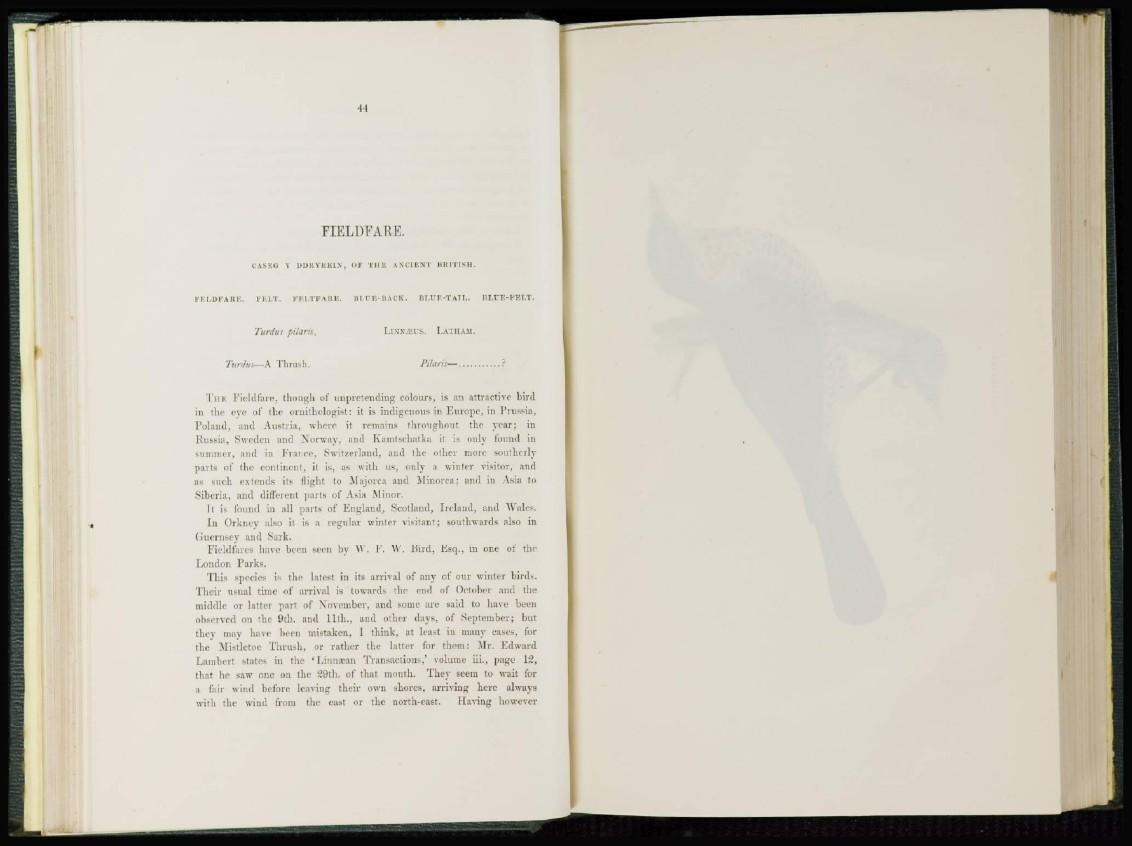
F I E L D F A R K .
C A 1 S G V D D K T B B I N , OF T H E A N C I E N T B R I T I S H.
F E L D F A R E . FELT. FELTF I R E , BLUE- IT U K . B L U E - T A I L . BLUE-FELT,
Turdus pilaris, LI N X . F I ' S . LATHAM.
Tunlus—A T h r u s h . Pilaris— ?
T H E Fieldfare, though of unpretending colours, is an attractive bird
in the eye of the ornithologist: it is indigenous in Europe, in Prussia,
Poland, and Austria, wherp it remains throughout the year; in
Russia, Sweden and Norway, and Kamtschatka it is only found in
summer, and in France, Switzerland, and the other more southerly
parts of the continent. it is, as with us, only a winter visitor, and
as such extends its flight to Majorca and Minorca; and in Asia to
Siberia, and different parts of Asia Minor.
It is found in all parts of England, Scotland, Ireland, and AVales.
In Orkney also it is a regular winter visitant; southwards also in
Guernsey and Sark.
Fieldfares have been seen by W. F. W. Bird, Esq., in one of the
London Parks.
This species is the latest in its arrival of any of our winter birds.
Their usual time of arrival is towards the end of October and the
middle or latter part of November, and sonic arc said to have been
observed on the 9th. and 11th., and other days, of September; but
they may have been mistaken, I think, at least in many cases, for
the Mistletoe Thrush, or rather the latter for them: Mr. Edward
Lambert states in the (I,inna?an Transactions,' volume hi., page 12,
that he saw one on the 29th. of that month. They seem to wait for
a fair wind before leaving their own shores, arriving here always
with the wind from the east or the north-east. Having however